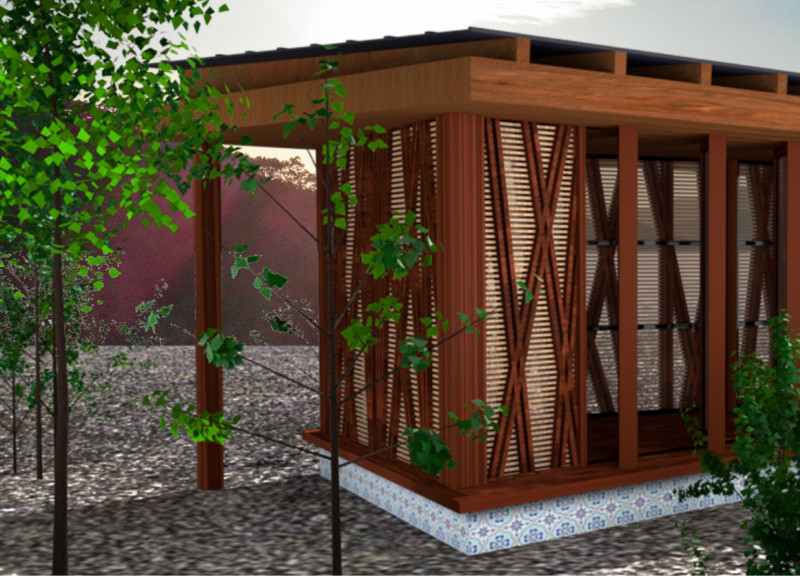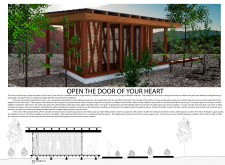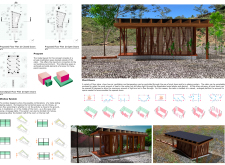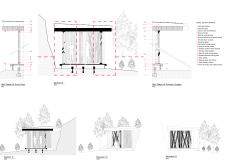5 key facts about this project
Functionally, the architecture is organized into two primary zones: a private meditation area and a communal space intended for group activities. This dual approach acknowledges the different needs of users, allowing for both solitary reflection and shared experiences. The careful spatial layout enhances the user experience by facilitating a seamless flow between indoor and outdoor environments, reinforcing a sense of tranquility that is essential for meditation practice.
A key aspect of the project is its elevated platform, which not only provides an unobtrusive vantage point within the surrounding landscape but also encourages the natural circulation of air and light. This elevated nature enables the structure to interact effectively with the site, allowing occupants to enjoy an uninterrupted connection to the serene views offered by the surrounding mountains. The foundational use of natural materials such as wood and plywood speaks to the project’s commitment to sustainability, while a porcelain tile surface connects the interior space with the ground outside, creating a cohesive aesthetic throughout.
Unique design approaches are evident in several features throughout the architecture. The remarkable pivot doors represent an innovative response to the need for flexibility; they allow users to create an open environment for activities and close off the space when a more intimate setting is desired. This adaptive capacity is complemented by a sophisticated window system featuring triple sliding glass panes, which provides an opportunity for personalized air circulation and modulation of interior climate. This attention to user needs exemplifies the design's commitment to practicality and comfort.
The facade deserves special mention as well. Crafted from laminated materials, it blends horizontal and vertical elements to not only enhance visual interest but also ensure durability and efficiency. This exterior design aligns with the project's environmental principles by maximizing natural light, reducing the need for artificial illumination, and creating a naturally lit interior conducive to meditation.
Overall, the project embodies an ethos that values both personal and collective experience within a purposeful architectural context. The focus on sustainability and harmony with the environment underlines the importance of responsible design practices. As such, *Open the Door of Your Heart* stands as a testament to how architecture can foster deeper connections between individuals, community, and the natural world.
For those interested in understanding the project's design elements further, exploring the architectural plans, sections, and various design layers will provide deeper insights into the architectural ideas that shaped this meditation space. Engaging with these details allows visitors to appreciate the comprehensive nature of this thoughtful project.


























